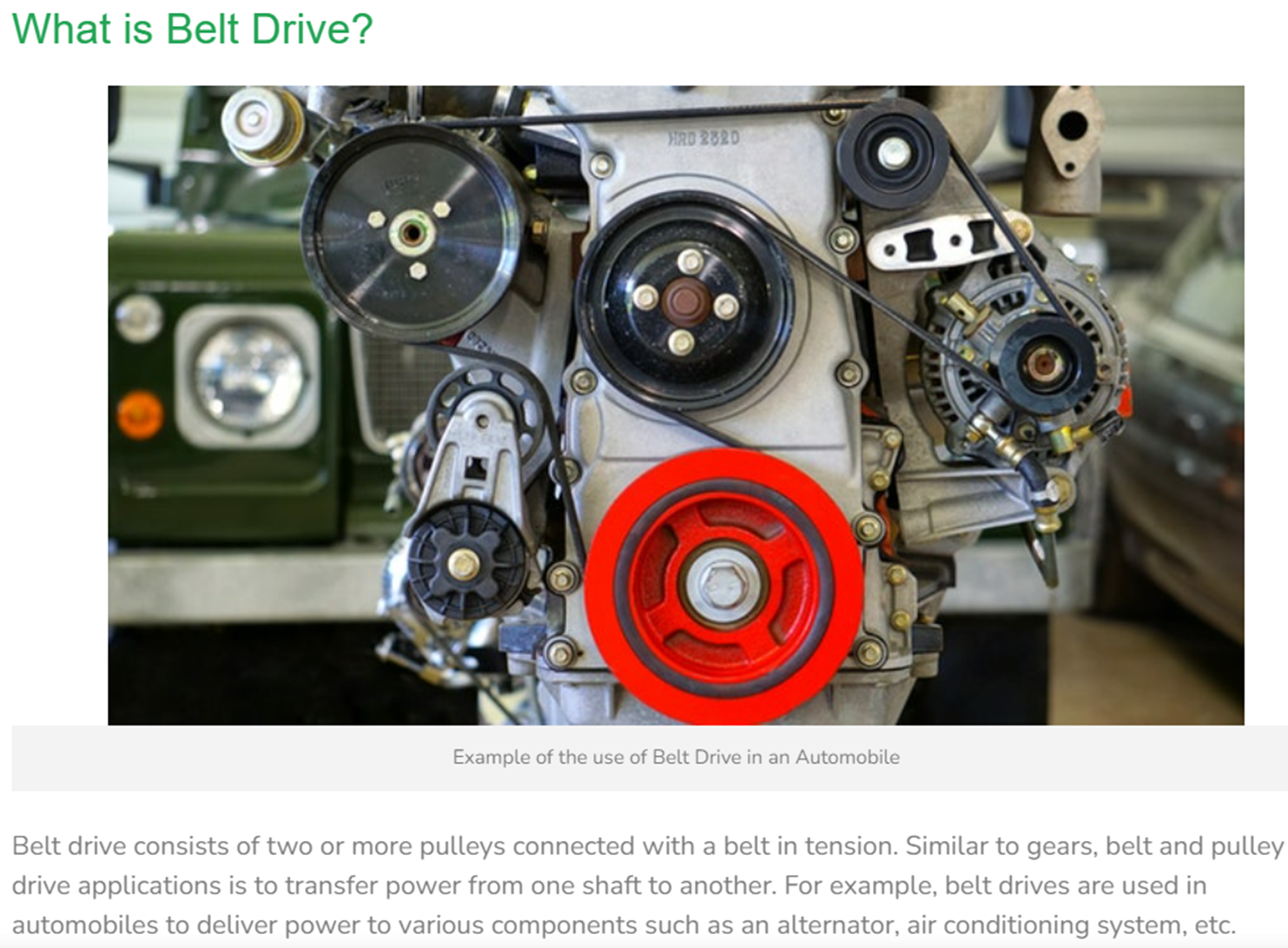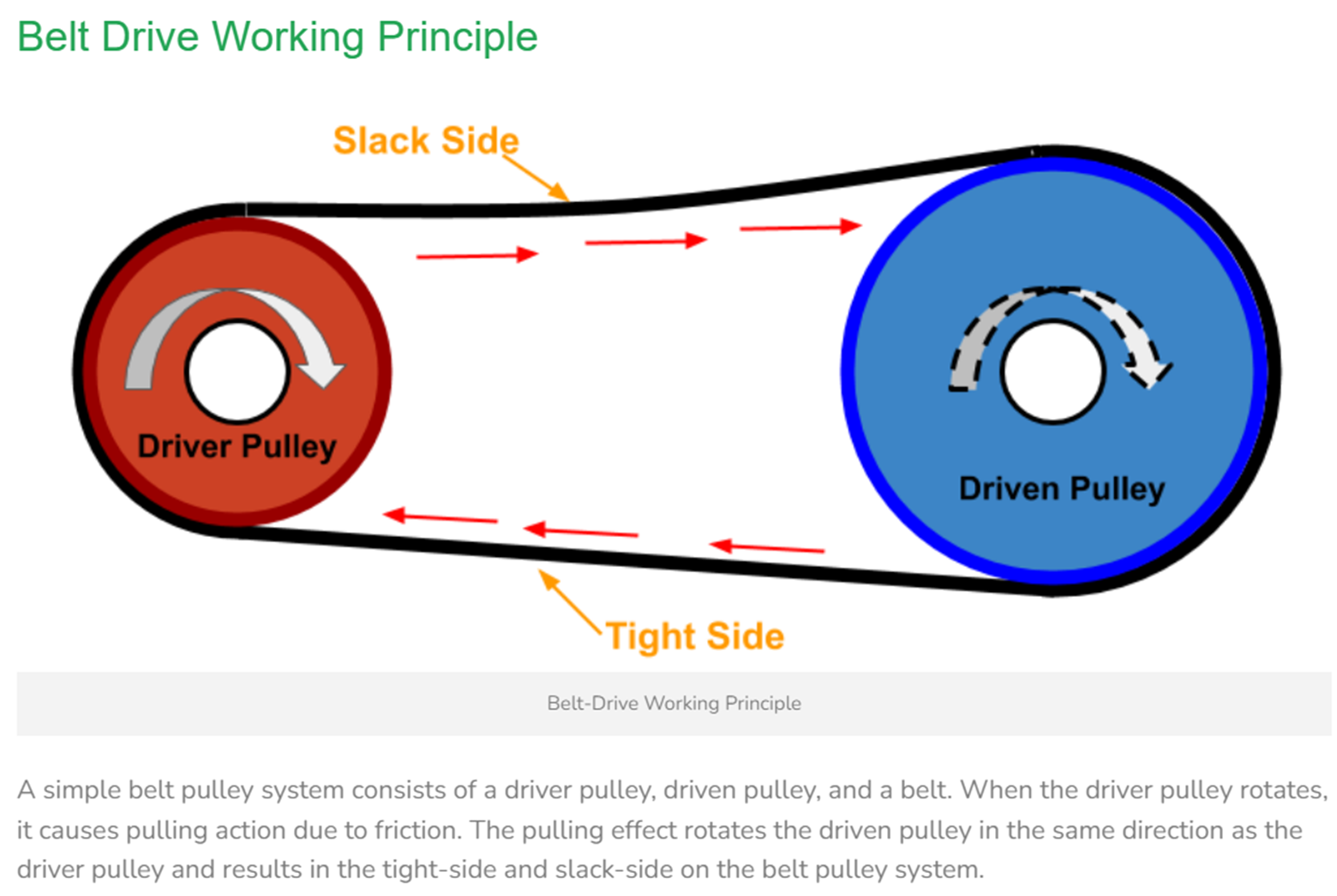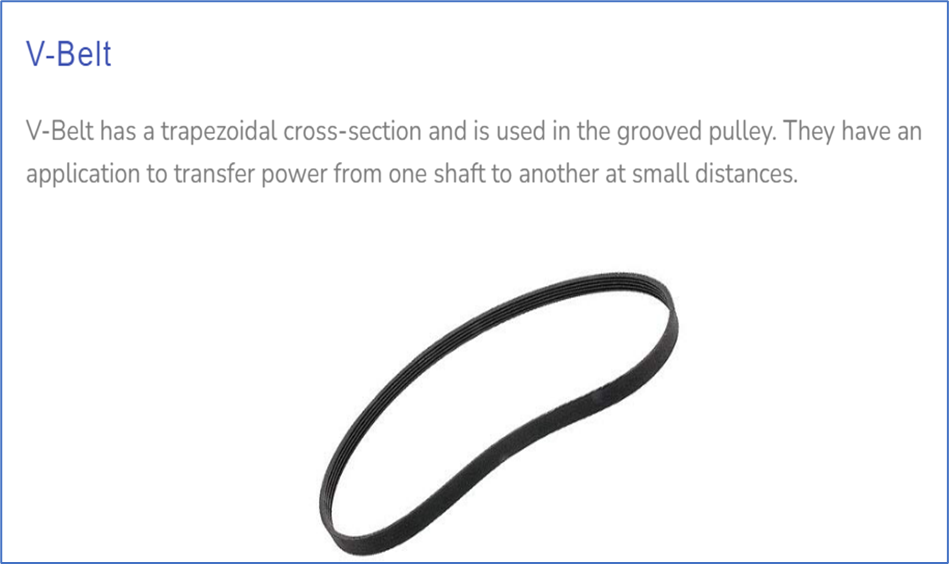
A
belt drive is a type of power
transmission system that uses belts to transfer power between two rotating
shafts. The belts used in a belt drive system are typically made of rubber or
other flexible materials, and they wrap around the pulleys or sheaves on the
shafts. When one shaft rotates, the belt transfers the rotational energy to the
other shaft, causing it to rotate as well.
Belt
drives are commonly used in a wide range of applications, from simple machinery
to complex systems. They offer several advantages over other types of power
transmission systems, including their ability to handle shock loads, their
relative ease of maintenance and installation, and their ability to operate
smoothly and quietly.
There
are several types of belt drives available, each with its own unique
characteristics and advantages. Some of the most common types of belt drives
include flat belt drives, V-belt drives, timing belt drives, ribbed belt
drives, and chain drives.
Flat
belt drives are the simplest type of belt drives, and they are typically used
in low-power applications. V-belt drives are the most common type of belt
drives and are suitable for high-power transmission applications, while timing
belt drives are used in applications that require precise synchronization
between the driving and driven shafts. Ribbed belt drives, also known as
serpentine belt drives, are used for multiple accessory drives, while chain
drives are used in heavy-duty applications where high power transmission is
required.
When
selecting a belt drive system, several factors should be considered, including
the power requirements of the system, the distance between the shafts, and the
speed of operation. By choosing the appropriate type of belt drive for a given
application, users can ensure reliable and efficient power transmission for
their machinery and equipment.
The
working principle of a belt drive is based on the transfer of power between two
rotating shafts using a flexible belt. The belt is wrapped around a set of
pulleys or sheaves on the two shafts, and as one shaft rotates, the belt
transfers the rotational energy to the other shaft, causing it to rotate as
well.
When
power is applied to the driving shaft, the belt begins to move around the
pulley or sheave. The movement of the belt creates a frictional force that
causes the driven pulley to rotate, thereby transferring power to the driven
shaft. The belt drive system operates smoothly and quietly due to the
flexibility of the belt, which helps to absorb any shocks or vibrations that
may occur during operation.
The
power transmission capacity of a belt drive is determined by the tension
applied to the belt and the coefficient of friction between the belt and the
pulley. Tension is applied to the belt through the use of an idler pulley or
tensioning device that maintains the proper tension on the belt during
operation. Proper tension is important for optimal power transfer, as too
little tension can result in slipping and reduced power transfer, while too
much tension can result in excessive wear and tear on the belt and pulleys.
Belt
drives are commonly used in a variety of applications due to their ease of
installation, low maintenance requirements, and ability to operate smoothly and
quietly. They are also capable of handling shock loads and high-speed
operations, making them a popular choice for many industrial applications. By
selecting the appropriate type of belt and pulley system for a given
application, users can ensure reliable and efficient power transmission for
their machinery and equipment.
There
are several types of belts used in belt drive systems, each with their own
unique characteristics and advantages. Some of the most common types of belts
include:
- Flat belts:
These are the simplest type of belts and are commonly made of rubber or
leather. They are typically used in low-power applications and are
suitable for short distances between shafts. Flat belts have the advantage
of being easy to install and maintain, but they are not suitable for
high-power transmission applications.
- V-belts:
These belts have a trapezoidal cross-section and are commonly used in
industrial applications. They are made of rubber and have high tensile
strength and excellent power transmission capacity. V-belts are suitable
for high-power transmission applications and can operate at high speeds,
making them a popular choice for many industries.
- Timing belts:
These belts have teeth on the inner surface that engage with corresponding
teeth on the pulley, providing precise timing and synchronization between
the driving and driven shafts. Timing belts are commonly used in
automotive engines and other machinery that requires precise timing.
- Ribbed belts:
Also known as serpentine belts, ribbed belts have multiple ribs on the
inner surface that fit into matching grooves on the pulleys. They are used
for multiple accessory drives and can transmit power to several components
simultaneously.
- Round belts:
These belts are made of rubber and have a round cross-section. They are
commonly used in applications that require high-speed operation and low
power transmission.
The advantages of using belts in power transmission systems include:
- Easy
installation and maintenance
- Smooth and
quiet operation
- Ability to
handle shock loads
- High power
transmission capacity
- Efficient
energy transfer
- Low cost
compared to other power transmission systems
- Flexibility
to work with different types of machinery and equipment.
By
selecting the appropriate type of belt for a given application, users can
ensure reliable and efficient power transmission for their machinery and
equipment.










12 Comments
BAK/21/CH/004